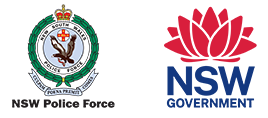Class 1C (Cash-in-Transit Guard) Transition Arrangements
A new 1C (Cash-in-Transit Guard) security licence subclass was introduced on 1 June 2023 as part of a range of amendments to NSW security legislation.
The new 1C subclass authorises the holder to patrol, protect or guard cash-in-transit (CIT).
The legislation amendments also merged the old 1A (Unarmed Guard) and 1C (Crowd Controller) subclasses into the new 1A (Security Officer) subclass.
The new 1A subclass authorises the holder to carry on unarmed guard and crowd controller activities but does not include CIT activities.
If you held a 1A and/or 1C subclass on 31 May 2023, your licence was automatically changed to the new 1A (Security Officer) subclass.
The new 1C subclass was also granted automatically to everyone who held a 1F (Armed Guard) subclass on 31 May 2023.
Who needs to hold the new 1C (Cash-in-Transit Guard) subclass?
Anyone who carries on CIT activities must hold the 1C (Cash-in-Transit Guard) subclass.
To carry on armed CIT activities, you must also hold the 1F (Armed Guard) subclass and the appropriate firearms licence.
How do I add the new 1C subclass to my licence?
You must successfully complete the NSW Class 1C (Cash-in-Transit Guard) Licence Course or obtain the CIT-related units of competency from the current NSW Class 1F (Armed Guard) Licence Course.
You can then lodge a P645 Application to Amend, Vary or Replace and Existing Class 1 and/or Class 2 Licence to add the new 1C subclass to your licence.
You must include with your application a copy of your statement of attainment or certificate showing you have satisfied the 1C subclass training requirements and pay the $80 licence variation application fee.
Once your application has been granted, you will be required to have your photo taken and will receive the new portrait style security licence card.
Please note: To add subclasses to your security licence, you must meet current eligibility criteria including:
- be an Australian citizen or permanent Australian resident (includes New Zealand citizen), or
- hold a visa sponsored by a Master security licence holder, or
- hold a visa for a skilled occupation that corresponds to the activities authorised by the proposed licence.
What is covered in the CIT training?
The NSW Class 1C (Cash-in-Transit Guard) Licence Course consists of the following units of competency:
- CPPSEC3118 Inspect and test cash-in-transit security equipment
- CPPSEC3119 Implement cash-in-transit security procedures
- CPPSEC3120 Load and unload cash-in-transit in secured and unsecured environment.
These units are also included in the current NSW Class 1F (Armed Guard) Licence Course.
Who can deliver the CIT training?
You can find the details of the organisations approved to deliver the NSW Class 1C (Cash-in-Transit Guard) Licence Course and the NSW 1F (Armed Guard) Licence Course here.
Why do I need to do training and hold a specific licence subclass when I’ve done unarmed CIT activity for many years?
A review of the national training package identified a gap in competency requirements for the unarmed CIT sector. The new CIT-specific subclass and its mandatory training requirements addresses this gap.
It will also allow SLED to remove mandatory CIT-specific training for prospective armed guards who may not want to do CIT work.

